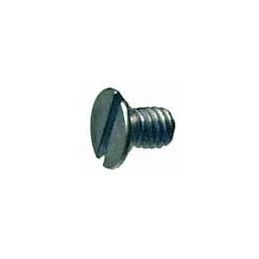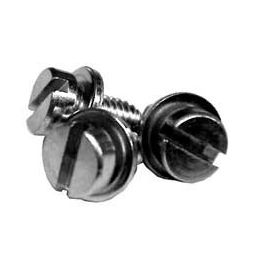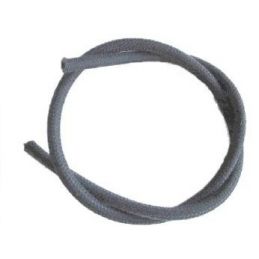Building a Daily Driver Part 3
If you’ve been following along with this article series on building the best daily driver engine, you know that we have already covered the general direction you’re going in, the importance of the right bore & stroke, and this article should clarify the correct case to start out with, your cam, and oil pump.
What case should you start with? By all means start with a dual relief case. Here’s how I get a case ready. If we are going to run a deep sump, which I highly recommend, one trick is to take out the studs and use long 6mm bolts from the inside out. This way there is no way to pull the stud out of the case, since the head of the bolt is on the inside you're not going to pull that through the case. If you are starting with a new case I usually replace the crappy pick up tube with a german one or CB performance sells a nice one with an extended pick up already on it.
Once you have the pick tube in place I mock up the sump on that half of the case with the screen and sump plate to make sure the pickup tube is the right length. Also I like to have an angle on the end so that there is no way the pick up tube can get blocked by the sump screen or be too close to impede the hole that oil is getting sucked up in.
Next, check for cam to lifter clearance with the lifters you're going to run and the cam. I like to see .060 to .100 clearance here. If you have it, great, if not, find somebody that can cut the lifter bosses down so you do have that clearance. On an Engle 90 cam or a stock cam you should have plenty of clearance. Bottom line - check it. Install your crank and push it back toward the flywheel end of the case and spin it. Two things to look at here. One, does it turn without hitting anything? Two, make sure that the rear thrust bearing is up against the back of the crank when the crank is pushed all the way back. If it is not, the chamfer in the bearing is smaller than the radius of the main journal. Not real common, but it does happen. There are two ways to fix this. If you have access to a lathe, make the chamfer larger. If you don’t (most people don’t) then buy a different brand of main bearing.
A note about case savers- make sure you have them. I use 10mm head studs so when I do a motor and it has 8mm ones I change them out to the 10s. I am not a fan of the 8mm studs. A lot of people are, just not me.
Next machine work to do is to full flow the case. Even if you can't afford an external oil system right now, do it anyways. If you don’t and want to add one later, guess what? You get to tear the motor all the way down to do it.
To check your oil pump stud length, set up your oil pump with the cover you’re going to use and the nuts. We want the stud to be just about flush with the nut. If not, buy studs or cut off studs that are too long.
Now to select a cam. There are a ton of cams out there. I, personally, am an Engle fan. That is not to say that other brands are bad or maybe even better. I just use engle and have had really good luck with them so I am sticking with them. I will give you the lift and duration so if you want to use another brand just get close to what I am listing. The biggest part of selecting a cam is the duration. A cam is most efficient in a 2 thousand rpm window. So pick the cam where your motor is going to spend most of its time or where you want the power band to be. I see way too many customers over caming their motors. I too have tried cams that are too big. Also keep in mind here that it’s the combination of parts that will make you motor a good one. One part that doesn’t work in sync with the others makes the motor only as good as the wrong part.
So here is my list. I know to most the numbers are not going to mean a lot, but I will also note where the cam in my opinion is the most efficient in a 2 thousand rpm window.
Stock 295 lift at the cam. 215 duration at .050. range 2300 to 4300
Engle 90, 297 lift at the cam. 224 duration at .050 range 2500 to 4500
Engle 100, 383 lift at the cam. 236 duration at .050 range 3000 to 5000
Engle 110, 392 lift at the cam. 284 duration at .050 range 3500 to 5500
Which one should you use? You need to consider the rest of the combination. I personally don’t run stock cams anymore. The 90 is made much better and last way longer.
I would use a 90 cam with the following. Stock or two one barrel carbs, header or stock muffler, stock heads. 1600 cc
I would use a 100 cam with 1600cc, two, two barrel carbs like 40 idf or the new 36 dlra carbs, header, stock heads.
I would use a 110 cam on 1776 or 2007cc. two, two barrel carbs like 40 idfs, header and 40x 35.5 heads.
Now all those combos with a compression ration of 7.7 to 8.5
So why not a bigger cam than what’s listed? This is a daily driver, not a Friday/Saturday night car or a race car. This car is going to spend most of its life just cruising down the road, not racing. I have found that these motors like between 3200-3800 rpms for extended periods of time. That is not to say you can't rev it past that. What I am saying is they like that range for long periods of time. It is a long drive from redding to la in the middle of summer. A good 600 miles of dry heat. I have done a lot of testing on my own rigs to figure out what it takes to not have problems with these rigs. So if a cam is good for lets say 3500 to 5500rpms and you're going to run at 3800 lets say, why would you want a cam that starts to work well at 4000? Right? Well I have to say I have tried it and it always bites me. You can do whatever you want here, this is just what works well for me. The only other thing I can say here is please get lifters that are compatible with the cam you going to run. If you're not sure, then ask the cam manufacture. I can assure you he doesn’t want his cam to go flat and will suggest a lifter that works well with his cam.
The other question here is where should you run the cam? Advanced? Straight up? Retarted? What does all that mean? Well you can run the cam advanced to try and gain more power. This is done with gears that have offset washers and slotted gears. These gears cost more than just the standard straight up gear and my feelings are that bang for the buck here it’s just not worth it. Leave the standard, less expensive gear here and let’s spend the savings somewhere else.
Okay, now let’s talk about oil pumps. Like cams, there are a lot of them out there. I use Schadek pumps. That is not to say others are not just as good, that’s just what I use. When you pick out a pump, there are three things a good parts person should ask you. What case/block are you running? In this case we are running dual relief? What cam are you running? Flat or dished? Well if this is an aftermarket cam then it’s the flat cam. What size do you want? 26mm or 30mm? If this is a bug, ghia, thing, then I run the 26mm. If it is a bus then I run the 30mm. Why? Well I only run about 7 feet of oil cooler line on a bug, etc and on a bus I run around 14 feet so I want the extra 4mm. Does it hurt to run the bigger pump on the bug? No it doesn’t.
Once you have your pump you or someone should tap the outlet side of the pump to ¼ npt. This way you can thread a plug into the outlet side of the pump. This is for the full flow. If you’re going to set it up now, now is the time to buy the full flow cover. If you're not, then get a ⅜ npt plug for the case where the full flow return fitting would be. With the cam installed in one side of the case and its gear torqued down, install the pump. Spin the cam and make sure you have clearance between the cam bolts and the pump. Some grinding might be needed here on the pump and or the heads of the cam bolts.
So that is pretty much the internal parts of the engine. We will continue all the way out, so stay tuned for Part IV next month.







